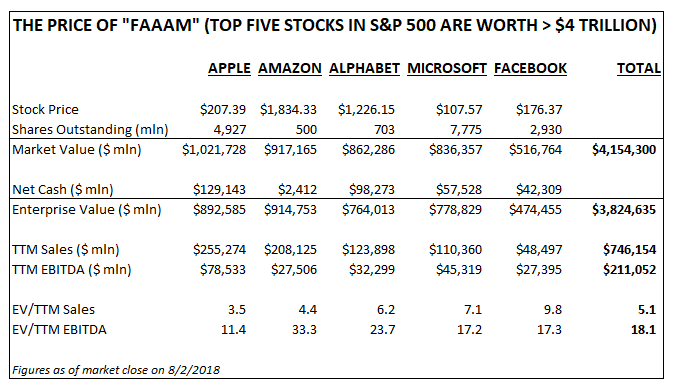For several years until recently large cap technology companies were carrying the U.S. stock market on their backs. The nickname of FANG was even coined to describe the group, which included Facebook, Apple, Netflix, and Google. However, all of those companies saw their stock prices peak in 2018 and move in sideways fashion since, which has resulted in the S&P 500 doing the same over the last year:
With the tech sector comprising more than 30% of the S&P 500, as big tech stocks see their rapid ascents halted, so does the overall market...
However, with the economy doing well and stocks having rebounded from their Q4 2018 swoon, there are going to be pockets of strength in the market regardless. For a while it was cannabis stocks but now it appears to be the IPO market.
While the valuations are not as extreme as they were in 1998-2000 with the tech bubble, they nonetheless don't jive with the underlying financial profiles of the companies. Beyond Meat, which will wind up being among dozens of alt-meat competitors, should not be valued at $10 billion (for example). Unlike high margin tech companies like Facebook or Google, traditional businesses like food manufacturing or general merchandise retail have low margins and therefore will not result in large price-to-sales multiples over the long term.
I bring up the latter category because today's IPO winner du jour is online pet store Chewy.com (CHWY), which price its IPO at $22 per share and nearly doubled to more than $41 before 11:30am ET. At that price, CHWY's market value is $17 billion.
Chewy is growing very fast and could very well reach $5 billion in annual sales this year. That sounds great, and at a tad over 3 times annual sales, maybe the stock is not mispriced? Well, let's not forget that Chewy sells pet food online and ships it to their customers. This is not a revolutionary business model, and it certainly is not cheap to operate. Cost of goods for Chewy is above 75% and operating margins are negative. If the company decided to grow more slowly and cut marketing expenses from 10% of sales to 5% of sales, they could perhaps breakeven.
Even in a world where Chewy reaches $10 billion of sales and manages to turn a profit, the valuation should be relatively meager. General merchandise retailers like Costco, Target, Wal-Mart, and Best Buy all trade for less than 1x annual sales in the public market. This is because margins are relatively low (EBITDA less than 10% of sales) and retailers tend to trade at or below market multiples because they are simply middlemen/resellers of products that someone else makes.
Will the share of pet care continue to move in the direction of online e-commerce transactions? Almost certainly. Will Chewy be forced to price very competitively to win share from Target, Amazon, and Petco? Absolutely. Will they be able to ever make big profits by selling cat litter online and shipping it to your house? Of course not.
If Chewy trades at 1 times annual sales five years from now, it has to grow its business by28% annually during that time to be be worth today's price in 2024. For investors who buy it today and expect a 10% annual return over the next five years, Chewy would have to grow 40% per year through 2024.
So is Chewy the next big thing or just the most recent example of an overpriced new IPO? I would bet on the latter and will be paying close attention to see if high valuations persist when many recent IPO are available to short with minimal cost.
Full Disclosure: No position in Chewy at the time of writing
(Author's note added at 6/14/19 12:40p ET - Petsmart bought Chewy in 2017 for $3.35 billion, so they are sitting on a 5x return in 2 years, to give readers a sense of the valuation inflation going on here)











